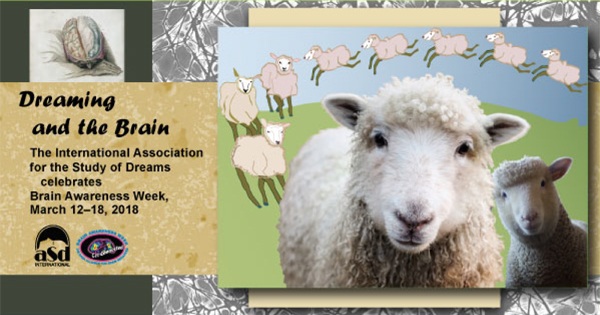Suddenly Asleep: Narcolepsy from an Inside View
I knew something had gone strange when I woke up at the breakfast table with my hair in the butter. I couldn’t remember laying my head down; I recalled eating my breakfast, then being somewhere else (rapidly fading from awareness), and then opening up my eyes to view the kitchen table at this unorthodox angle, up close and personal. Narcolepsy: it’s not just a disease, it’s an adventure!
I might have had narcoleptic seizures before this, passed off as nodding off from mere sleepiness. “I guess I wasn’t as fascinated with that movie as I thought.” “On a sunny day like this, wouldn’t you find the neighbor’s lawn an inviting place to lie down?” Looking back, I went pretty far to rationalize away the evidence. But finding my hair in the butter made me face the full helplessness of my impromptu naps. Had laying my head down been something I’d simply chosen, I would have offended neither the butter nor my hair with a meeting unfortunate for both of them. Years later I would spend a night with electrodes glued to my scalp to confirm it, but my narcolepsy became pretty obvious right then.
How I became narcoleptic is anybody’s guess. Go to a different website, read a different book or article, and you will encounter a different theory. I most strongly suspect a car accident and untreated whiplash, going with the brain-stem lesion theory for now. The timing seems to fit.
I’m no scientist, but at least I can show you narcolepsy from my inside view. First of all, one has different degrees of narcolepsy at different times. I have remission periods that can last for months, where I can push through weariness like anybody else. Then come the active periods, where I need to lie down within minutes of feeling fatigue overtake me or I’ll fall down. (I’ve joked that I take naps before the naps take me.) Sometimes, instead, I’ll sleepwalk, often with surprising results. (Do you have any idea how disorienting it can be to wake up strolling through the lobby of a science fiction convention?) The most dangerous period is in between these two, when I think I can push through and I can’t – that’s when I can take a hard fall.
Yet I seem to have some protection even then. Several times in my life I have sleepwalked away from danger. Once, while I was painting my grandmother’s ceiling, a sleep-seizure came over me. The next thing I knew, I woke up in her living room, lying on the couch – with the dripping paintbrush still in hand! Apparently I had sleepwalked safely down the ladder. Another time I fell asleep in a factory full of sharp objects and sleepwalked into the stockroom, safe between the rows of shelves, where I woke up on my feet, momentarily confused but unharmed. This safety instinct doesn’t kick in to spare me minor scrapes and bruises, though.
About that paintbrush – after some years of having narcolepsy, the habit of not letting go of things has gotten into my body, kind of an instinct. Usually that works in my favor (nice to wake up still carrying my purse!), but like all instincts, it doesn’t allow for fine tuning, like “Let go of the paintbrush while you’re still above a tarp!”
I seem to experience three kinds of sleep-seizure.
1) In one, my mind falls asleep, but not my body. I remain standing, sitting, or walking in this world, but from my perspective, I plunge into a different world – dreaming, you’d say, but I can’t really tell the difference. For instance, the time I sat at my desk at home in California, and suddenly found myself on the brink of the Grand Canyon with my toes over the edge, while the voice of God boomed at me, “Go where I send you!” Or walking through an office, I feel a bump against my ankle, glance down, and see that the corner of the gate of a chain-link fence has swung open in the wind and bumped against my ankle, then I look up to find myself in a field of yellow grass – then blink and return to the office.
Alternately (category 1B?) I might still appear in this world, but with a bit of dream superimposed upon it, such as looking into a mirror and for a second seeing somebody else there; or boarding a train and seeing a Roman centurion board ahead of me, and then in a blink see him become an ordinary man in a business suit. A doctor would call these hypnagogic hallucinations.
2) I also have times when my body goes asleep while my mind stays awake. You would call this cataplexy. I call it annoying, because I have no control of how my body falls, and it can land in really uncomfortable positions! Calling me does not wake it – my mind is already awake and not having much luck doing anything about my sleeping body – but touching my body does wake it to join the rest of me. Once, when I worked in medical transcription, this happened during an office party. I careened straight into two huge, open bottles of Coca-Cola and 7-Up, and then lay on the floor directly under them as they glugged icy soda pop onto my helpless body. I heard my coworkers asking each other, “What do we do now?” I kept thinking, “First pick up the bottles, you idiots, and stop them gushing all over me! I’m freakin’ cold!” I heard somebody laugh, saying, “We work in a hospital – we ought to know what to do!” Ya think? Finally a secretary bent down and shook my shoulder, which worked like breaking a spell. I woke fully, not sure whether to laugh with them or cuss them out.
3) And then there’re the times when my body and brain get on the same page and go down together. You’d see me fall unconscious. I’d see my world change. Most of the time I have what I call flash-dreams – quick images like a five-sense picture, but so rich in detail that I can spend much more time writing it down than I did dreaming it. I often get more symbolic meaning from a flash-dream than from an epic nighttime dream – it’s concentrated.
These flash-dreams come in handy. An awkward fact about narcolepsy is that it tends to hit during stress. Most people would rather not go unconscious right when they seem to need action the most. But, in fact, flash-dreams can tell me how to deal with the crisis. I have no spectacular examples, mostly things like falling asleep in the middle of transcribing for a doctor who obviously spent more time studying medicine than English, and waking up knowing exactly what he was trying to say. Or I’ll fall asleep in the middle of a tense conversation and see an image that communicates graphically to me what the other person needs. If you want spectacular, go to the history of Harriet Tubman, who led slaves to freedom guided by narcoleptic flash-dreams.
If narcolepsy blurs the line between sleeping and waking by day, it also does it by night. Spontaneous lucidity often comes over me in my evening-dreams. Narcolepsy also makes possible the overlap of waking and sleeping brainwaves, so that my dreams can take on a storylike form, with logic and reoccurring characters and places. Over the years my dreams have constructed an entire world, with many different but interlocking landscapes, histories, cultures, and subcultures. (You can find the stories I base on these dreams at http://dreamdeer.grailmedia.com/tilian/allindex.html.)
How has this affected my life, aside from providing writing material? It got me into dreamwork, for one thing – why waste the down time? It has also made a mystic out of me. I can’t take “normal” perceptions for granted, or believe in only one reality, when other perceptions can so suddenly intrude upon my life so tangibly. I wouldn’t call it a gift, for it does not come for free – I have to deal with chronic fatigue, and I cannot safely drive a car – but I would call it an expensive yet precious resource.
The flash-dreams have guided me in life-changing decisions, like where to move to. The Grand Canyon dream, for instance, prompted me to move to the Grand Canyon State – which led to everything from much better employment for my husband, to finding my ancestral people.
Sure, I have days when I would love to drive a car or have more energy. But on the whole, I like the life that narcolepsy has given me – slipping back and forth between worlds has never bored me!
………………………………………………………………………………………………………………………..
© 2018 Dolores J. Nurss. At age 17, Dolores J. Nurss had a dream that her life’s work would be as a “Random Factor” – one who would not specialize, herself, but who would facilitate the synergy of others in many fields. So Ms. Nurss now fulfills this function for IASD and other communities.
Banner images: (Left) Plate 1. Sir Charles Bell, The anatomy of the brain, 1802. Wellcome Collection. CC BY. (Center) “Sleep NOW!” Gloria Sturzenacker.
The International Association for the Study of Dreams is a nonprofit, international, multidisciplinary organization dedicated to the pure and applied investigation of dreams and dreaming. Our members variously explore dreams through the sciences, the humanities, the arts, clinical applications, and their own experiences. See our website (ASDreams.org) for information on dream research, research grants, membership, and conferences. IASD is a partner in the global Brain Awareness Week campaign of the Dana Alliance, which offers a large selection of brain education materials on its website (dana.org/baw).


